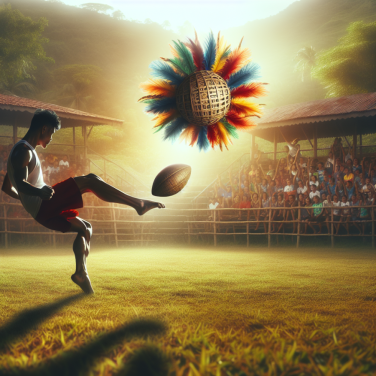Exploring the Ancient Techniques and Traditions of Glima
Glima, a term that might not be widely known outside of certain circles, refers to an ancient form of wrestling native to Scandinavia, with deep roots in Viking tradition. Its practice has been meticulously preserved over centuries, making it not just a martial art, but a living relic of Viking culture.
The essence of Glima is based on a series of techniques and movements designed around the principles of balance, leverage, and speed. It is not purely about physical strength; rather, it emphasizes technique and agility. Glima wrestlers, known as glímumenn, engage in a strategic dance where each seeks to off-balance and outmaneuver their opponent, leading to a throw or takedown that would have been crucial in Viking combat.
One of the most distinctive features of Glima is the belt-grip. Wrestlers wear special belts and hold onto each other's belts or trousers, maintaining a tight grip throughout the match. This technique not only allows for a wide variety of moves and counters but also ensures safety, as it helps prevent the opponents from falling dangerously.
Competitions and matches are governed by an intricate set of rules that prioritize honor and fairness, values held in high esteem by the Vikings. The rules discourage brute force and instead reward skill and technique. Striking, for instance, is not allowed; the focus is entirely on throws, locks, and holds designed to subdue the opponent without causing harm.
Drills and exercises in Glima training are intended to develop a fighter's agility and responsiveness. These drills often involve footwork patterns that enhance balance and coordination, critical for executing throws with precision. Practicing Glima also cultivates a sense of rhythm and timing, as it's essential to react swiftly and capitalize on the moment an opponent loses their balance.
In addition to being a combat system, Glima also functions as a social sport. It was traditionally a way for Vikings to bond, settle disputes, and entertain themselves and others during gatherings and festivals. Today, it still holds a ceremonial place in Scandinavian culture, featured at cultural events and tournaments that celebrate Viking heritage.
Preservation of Glima also extends to the attire worn during its practice. Participants often wear clothing that is reminiscent of Viking gear, imbuing a sense of historical authenticity to the art. This attire doesn't just serve an aesthetic purpose; it is functionally similar to what was worn in Viking times, which adds a layer of authenticity to the technique applications.
Read also:
Navigating the Thrilling World of Fantasy Sports: A Comprehensive Guide
Preserving the Cultural Heritage of Glima in Modern Practice
In the relentless march of progress, it is vital that we preserve the practices and traditions that form the bedrock of our collective history. Glima, a martial art that traces its roots to the Viking Age, is more than mere combat technique; it is a cultural heritage that encapsulates the spirit, values, and everyday life of the Norse people. Though modern practitioners primarily engage in Glima as a sport, there is a growing awareness of its historic and cultural significance, sparking efforts to maintain Glima's authenticity even as it evolves.
The traditional combat system of the Vikings, Glima was as integral to Norse culture as their sagas and runes. It was not only a means of self-defense but also a form of physical education, instilling values such as respect, bravery, and honor. Aspects of this martial art can be seen in historical texts and sagas, which describe how the Vikings used grappling and close-combat techniques that are foundational to Glima. Competitions resembling those of the ancient Norse are still held today, complete with rituals and ceremonial dress, reinforcing the deep connection between past and present.
Glima’s techniques are unique in their emphasis on balance, leverage, and the use of opponent’s power against them. Glima practitioners, or glímumenn, learned to anticipate and counteract the movements of their adversaries, a strategy that mirrored the tactical mindset of the Vikings. The continuity of these techniques is maintained through rigorous training and adherence to traditional rules, such as the prohibition of striking or kicking an opponent. This ensures that the original form of the art continues to be practiced, not just in its physical execution but also in its philosophical underpinnings.
Organizations such as the International Glima Association work tirelessly to preserve this heritage. They conduct seminars led by experts steeped in both Glima practice and Viking history, ensuring that the knowledge passed down is as authentic as possible. Events are held where enthusiasts can don traditional Viking garments, and engage in Glima as it may have been practiced centuries ago, celebrating not just a martial art, but a way of life. It's a binding thread that links the past to the present, integrating history into a living tradition.
But preserving cultural heritage isn't just about maintaining ancient customs; it's also about ensuring they continue to be relevant in contemporary society.




